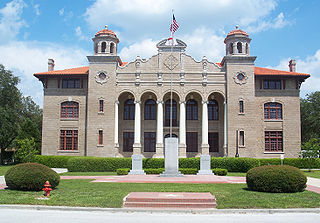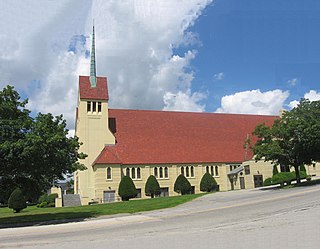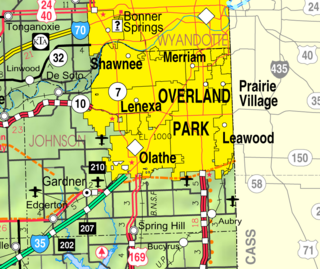Related Research Articles

Queens is a borough of New York City, coextensive with Queens County, in the U.S. state of New York. Located on Long Island, it is the largest of the five New York City boroughs by area. It is bordered by the borough of Brooklyn at the western tip of Long Island and by Nassau County to its east. Queens shares water borders with the boroughs of Manhattan, the Bronx, and Staten Island, as well as with New Jersey.

The Emergency Quota Act, also known as the Emergency Immigration Act of 1921, the Immigration Restriction Act of 1921, the Per Centum Law, and the Johnson Quota Act, was formulated mainly in response to the large influx of Southern and Eastern Europeans and restricted their immigration to the United States. Although intended as temporary legislation, it "proved, in the long run, the most important turning-point in American immigration policy" because it added two new features to American immigration law: numerical limits on immigration and the use of a quota system for establishing those limits, which came to be known as the National Origins Formula.

The United States Census Bureau (USCB), officially the Bureau of the Census, is a principal agency of the U.S. Federal Statistical System, responsible for producing data about the American people and economy. The Census Bureau is part of the U.S. Department of Commerce and its director is appointed by the President of the United States.

The United States had an official estimated resident population of 334,914,895 on July 1, 2023, according to the U.S. Census Bureau. This figure includes the 50 states and the District of Columbia but excludes the population of five unincorporated U.S. territories as well as several minor island possessions. The United States is the third most populous country in the world. The Census Bureau showed a population increase of 0.4% for the twelve-month period ending in July 2022, below the world average annual rate of 0.9%. The total fertility rate in the United States estimated for 2022 is 1.665 children per woman, which is below the replacement fertility rate of approximately 2.1.

The Bureau of Labor Statistics (BLS) is a unit of the United States Department of Labor. It is the principal fact-finding agency for the U.S. government in the broad field of labor economics and statistics and serves as a principal agency of the U.S. Federal Statistical System. The BLS collects, processes, analyzes, and disseminates essential statistical data to the American public, the U.S. Congress, other Federal agencies, State and local governments, business, and labor representatives. The BLS also serves as a statistical resource to the United States Department of Labor, and conducts research measuring the income levels families need to maintain a satisfactory quality of life.

Sumter County is a county located in the central portion of the U.S. state of Florida. As of the 2020 census, the population is 129,752. It has the oldest median age of any US county and the highest percentage of residents aged 65 and older—at 55.6% in 2014-2018. Its county seat is Bushnell, and the largest city is Wildwood. Although the community of The Villages has more residents, it is a part of unincorporated Sumter County.

Androscoggin County is a county in the U.S. state of Maine. As of the 2020 census, the county's population was 111,139. Its county seat is Auburn and its largest city is Lewiston.

Shawnee is a city in Johnson County, Kansas, United States. It is the seventh most populous municipality in the Kansas City metropolitan area. As of the 2020 census, the population of the city was 67,311.
Statistics Canada, formed in 1971, is the agency of the Government of Canada commissioned with producing statistics to help better understand Canada, its population, resources, economy, society, and culture. It is headquartered in Ottawa.

Paul Anthony Samuelson was an American economist who was the first American to win the Nobel Memorial Prize in Economic Sciences. When awarding the prize in 1970, the Swedish Royal Academies stated that he "has done more than any other contemporary economist to raise the level of scientific analysis in economic theory".

ProQuest LLC is an Ann Arbor, Michigan-based global information-content and technology company, founded in 1938 as University Microfilms by Eugene Power.

The United States census is a census that is legally mandated by the Constitution of the United States. It takes place every ten years. The first census after the American Revolution was taken in 1790 under Secretary of State Thomas Jefferson. There have been 23 federal censuses since that time. The census includes territories of the United States. The United States Census Bureau is responsible for conducting the census.

The American Community Survey (ACS) is an annual demographics survey program conducted by the U.S. Census Bureau. It regularly gathers information previously contained only in the long form of the decennial census, including ancestry, citizenship, educational attainment, income, language proficiency, migration, disability, employment, and housing characteristics. These data are used by many public-sector, private-sector, and not-for-profit stakeholders to allocate funding, track shifting demographics, plan for emergencies, and learn about local communities.
In economics, distribution is the way total output, income, or wealth is distributed among individuals or among the factors of production. In general theory and in for example the U.S. National Income and Product Accounts, each unit of output corresponds to a unit of income. One use of national accounts is for classifying factor incomes and measuring their respective shares, as in national Income. But, where focus is on income of persons or households, adjustments to the national accounts or other data sources are frequently used. Here, interest is often on the fraction of income going to the top x percent of households, the next x percent, and so forth, and on the factors that might affect them.
The International Institute of Agriculture (IIA) was founded in Rome in 1905 by the King of Italy Victor Emmanuel III with the intent of creating a clearinghouse for collection of agricultural statistics. It was created primarily due to the efforts of David Lubin. In 1930, the IIA published the first world agricultural census. After World War II, both its assets and mandate were handed over to the Food and Agriculture Organization (FAO) of the United Nations.

Most of the 25-30 million followers of Sikhism, the world's fifth-largest religion, live in the northern Indian state of Punjab, the only Sikh-majority administrative division on Earth, but Sikh communities exist on every inhabited continent. Sizeable Sikh populations in countries across the world exist in India (20,833,116), Canada (771,790), England (520,092), the United States (~280,000), Italy (~220,000), and Australia (210,400), while countries with the largest proportions of Sikhs include Canada (2.12%), India (1.56%), Cyprus (1.1%) England (0.92%), New Zealand (0.87%), and Australia (0.83%).

The Office of the Under Secretary for Economic Affairs, or OUSEA, is a high-ranking official in the United States Department of Commerce that serves as the principal adviser to the United States Secretary of Commerce on economic analysis.
Harry Sebee Linfield, aka H.S. Linfield was a 20th Century demographer and statistician of the Jewish people.
References
- ↑ Statistical Abstracts Series
- ↑ U.S. Census Bureau Archived 2013-10-19 at the Wayback Machine , The 2012 Statistical Abstract. What is the Statistical Abstract?
- ↑ Don’t kill America’s databook, Robert J. Samuelson, Washington Post, August 21, 2011
- ↑ Bob Samuelson (and statistical abstract) appreciation day, 08/22/2011
- ↑ Save the Statistical Abstract, August 22, 2011
- ↑ ProQuest and Bernan Pick up Where the Census Bureau Left Off: The Statistical Abstract of the United States is BACK!
- ↑ [https://bookstore.gpo.gov/products/statistical-abstract-united-states-2012-paperback Statistical Abstract of the United States 2012 (Paperback). Agency Publisher: Department of Commerce (DOC). U.S. Census Bureau.
- ↑ ProQuest Statistical Abstract of the United States 2018. The National Data Book ProQuest and Bernan Press.